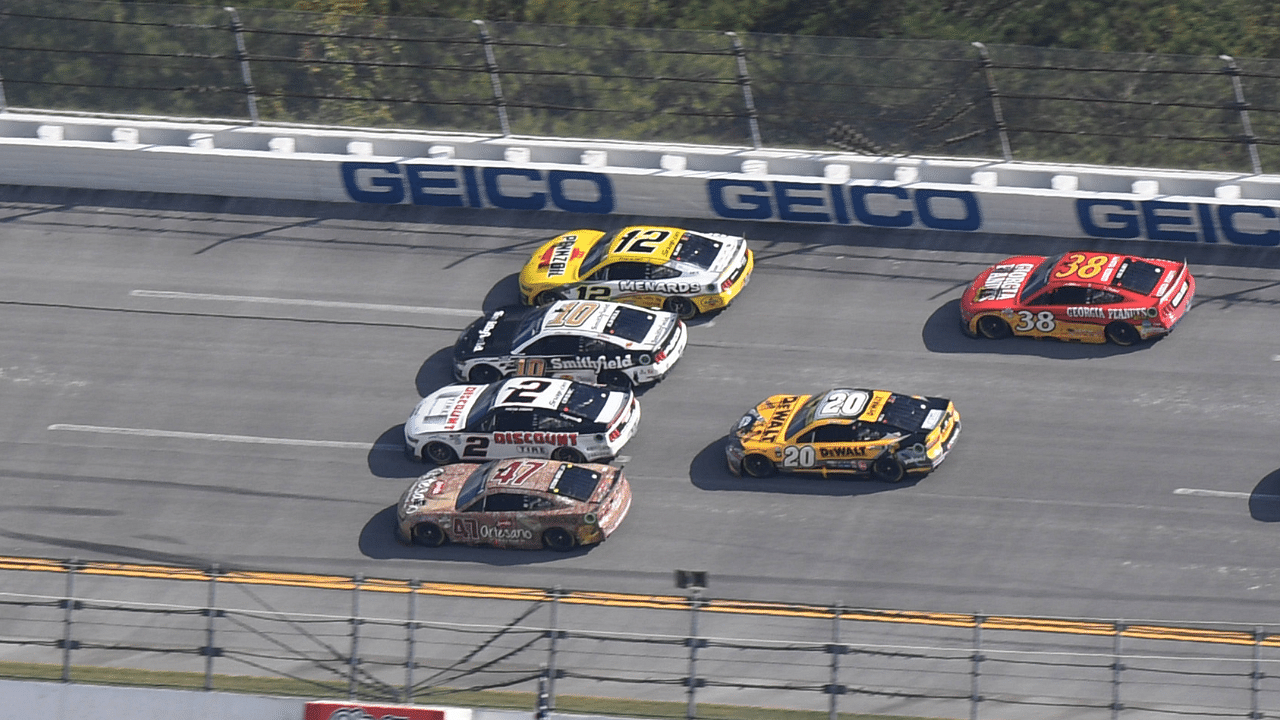The rising speed of stock car racing machines on Superspeedway-style tracks meant NASCAR made a big decision towards safety in the late 80s by introducing a form of engine restriction to curb power levels. As the teams and drivers found ways to push their machines to the limit with speeds exceeding 210 miles an hour in qualifying, a device called a ‘Restrictor Plate’ was fitted to every car’s engine’s intake manifold underneath the carburetor.
Advertisement
The ‘Plate’ as it is often referred to, decreased the flow of air and fuel into the engine, giving every car the same amount of power set by the governing body which was deemed safe. With subsequent races being held with this ‘plate’ attached to the engine, the drivers and as well as the fraternity eventually nicknamed Superspeedway and intermediate track visits ‘Plate Races’.
This is the “tapered spacer” vs a normal restrictor plate. Finally found some images! #NASCAR pic.twitter.com/iL20L7kF67
— Greg Davis (@GregMDavis) February 1, 2019
This referred to the reduced engine power and hinted at a greater focus on drafting. NASCAR’s introduction of Plate Racing was accelerated by Bobby Allison’s crash in 1988 that took place during the previous year’s Talladega visit. Allison’s car blew an engine, which in turn burst its rear wheel. In the process, his car sliced sideways then lifted into the air and struck the catch fence, ripping nearly 100 feet of fencing. While nobody was harmed in the incident, things could have taken a grimmer turn and could have become a repeat of the 1955 Le Mans disaster.
While restrictor plates have helped reduce high-speed crashes at superspeedways, they aren’t without their drawbacks. These plates slow down a car by over 20 mph. Bill Elliott had set the track record at Talladega carrying a speed of 213 mph in 1987. But with the introduction of plate racing the top speeds only reached about 190-195 mph.
This resulted in several cars bunched up together, running high at high speeds. So if one driver loses control, they could wreck the entire field, making the scenario quite dangerous. Restrictor plates are one of the reasons why fans have come to expect ‘The Big One’ at every single Superspeedway race on the calendar these days.
This is why you don't wait until the final two corners to make your move!! Also stop throwing late blocks at a plate race 🗣🗣👏🏻👏🏻 #DAYTONA500 #NASCAR pic.twitter.com/rLJNelak2U
— Ryan Ostrander 8 🏁 (@RyanOstrander_8) February 15, 2021
While the restrictor plates made sense for the older generation Cup Series cars, the same might not be helpful in the Next-Gen era. These new cars have often been criticized for the lack of power they exhibit and so far the promotion has done nothing to increase their power output. Hence, the usage of restrictor plates or tapered spacers as they are referred to now with the current era of cars doesn’t seem fair.
Drivers have long been asking for more power especially on the calendar’s short tracks. With lower maximum speeds achieved at such venues, it reamins to be seen if NASCAR gives in to their demands.








